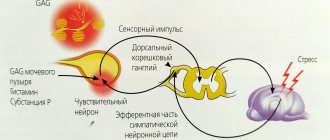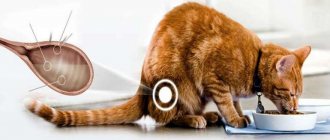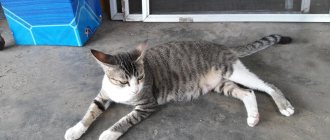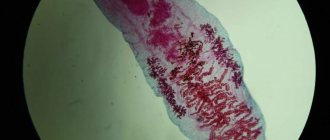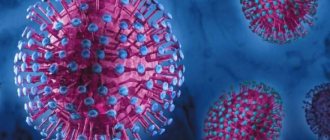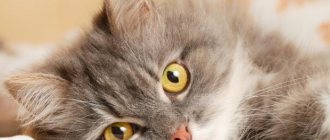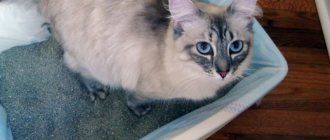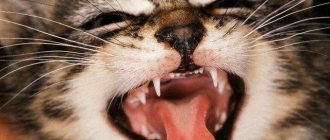Cystitis - one of the most “tenacious” diseases of cats. The disease quickly becomes chronic and flares up many times during the cat’s life.
Cystitis brings suffering to both the cat and its owners. The cat is in pain and suffers from fever. For the owner, this period is exciting, and there is a pressing discomfort from the fact that the cat does not have time to reach the potty - puddles and drops of urine can be found throughout the apartment.
Even though cystitis is inconvenient and you have to endure the smell of cat urine in your home, do not decide to euthanize your pet. Intensive treatment of cystitis in cats leads to a complete recovery of your whiskers! The disease disappears in 2-3 days!
We provide valuable information on how to prevent the development of cystitis , what causes frequent urination in a cat and symptoms of bladder inflammation, how to effectively treat cystitis in cats at home, and how to reduce general discomfort during an animal’s illness .
Causes of cystitis in cats
Why do cats develop cystitis? The main reasons are considered to be the following:
- penetration of bacteria into the bladder cavity (may be a consequence of an existing infectious pathology, weakened immunity);
- lack of fluid in the body;
- diabetes;
- helminthiases;
- injury to the urinary tract, internal organs (for example, due to a fall);
- weakening of the immune system;
- hypothermia;
- stones in the bladder.
Cystitis in cats develops even due to stress. This could be moving, separation from the owner, the appearance of a new tenant (adult, child, animal) in the house, and so on.
How to prevent the appearance of cystitis
Bladder inflammation is very easy to prevent. For this it is enough:
- Minimize stressful situations for cats. If this cannot be avoided (moving, for example), then it is better to use sedatives;
- avoid hypothermia and control drafts after swimming;
- minimize traumatic risks (falls on the stomach, blows);
- feed balanced and varied (exclude food from the human table - hot, spicy, smoked, fried, etc.), do not give only dry food;
- give plenty of clean water;
- Always keep special medications for the prevention of cystitis ready, having consulted with your veterinarian in advance about the dosage and frequency of courses.
Author:
Grinchuk Ekaterina Andreevna veterinarian
Are there risk groups?
Cystitis in a cat
Any pet with a mustache can get cystitis, but cats and kittens can be identified as being at risk. First of all, weakened animals are susceptible to cystitis: those who have had the disease, newborns, and the elderly. Since their immune system is reduced, any infection or cold living conditions can trigger an inflammatory process.
Experts also note that cats are more susceptible to cystitis than cats. And if you compare sterilized (castrated) animals with those who have not undergone surgery, the former get sick more often. This may be due to both a weakened immune system and an infection introduced during the operation.
Diagnosis of bladder inflammation
Treatment for all forms of pathology is similar, but not the same, and for successful therapy it is important to consult a veterinarian in a timely manner. To correctly determine the cause of the deterioration of the pet’s condition, tests and diagnostic procedures are required:
- Inspection. The specialist assesses the general condition of the cat, palpates the abdomen and measures the temperature. It is important to collect a pathological history.
- General blood analysis. Required to determine the inflammatory process in the body and the presence or absence of an infectious agent of cystitis.
- Analysis of urine. It is determined whether the urine has a normal color, whether there is an admixture of blood or pus in it, and whether inflammatory agents are present. When they are identified, bacterial culture is carried out on a nutrient medium.
- Blood chemistry. The study helps in assessing the severity of damage to the urinary system and general vital signs of the body.
- Ultrasound. It is carried out to determine the degree of inflammation and its neglect. The presence of tumors and stones in the bladder, if present, is also detected.
Be sure to read:
Polycystic kidney disease in cats: causes, symptoms, treatment, how long they live with this disease, prevention
If the main presumptive diagnosis is cystitis, then treatment begins even before all test data are received. This allows you to stop the progression of inflammation and prevent the cat’s condition from worsening. Based on the test results, treatment can be adjusted.
Types of cystitis in cats
The following types of cystitis in cats are distinguished:
- hemorrhagic – occurs in an acute form, there is blood in the pet’s discharge;
- serous-catarrhal – characterized by the presence of turbidity and mucus in the discharge;
- purulent – characterized by the presence of pus in the urine;
- idiopathic - is difficult to study, since it does not depend on any factors, and occurs in rare cases.
Depending on the nature of the disease, acute and chronic cystitis are distinguished. The first in most cases flows into the second, even if completely cured. The chronic form requires special attention to the pet, since the slightest mistake can provoke an exacerbation, for example, a slight change in diet or a draft in the summer.
Types of pathology
Piroplasmosis in cats: symptoms and treatment
In veterinary medicine, there are two types of cystitis:
- acute form. It manifests itself as a sharp deterioration in the functioning of the genitourinary system. The animal owner’s task is to immediately take the animal to the veterinarian for examination if signs of concern are detected;
- chronic form. Its difficulty lies in the fact that the pet rarely shows anxiety and only during urination. The owner may not notice the symptoms. This will cause the condition to worsen every day, weakening the immune system.
For your information! There are often situations when, without lack of treatment, the chronic stage turns into acute.
Symptoms of cystitis
The main sign of cystitis in cats is pain. Due to severe pain, the mustachioed pet’s behavior changes:
- a cat can go to the toilet anywhere in the house, even if it is litter box trained;
- due to pain during urination, the animal makes corresponding plaintive sounds;
- after the cat goes to the toilet, its gait changes - it bends its back a little and seems to “drag” its legs;
- the pet's urge to urinate becomes more frequent;
- the cat may not move for a long time;
- the animal often licks the perineum.
Due to the soreness of the abdomen, the cat does not allow him to be touched, he breaks out and meows. Other symptoms are gradually added: body temperature rises, bloody or purulent discharge appears from the genitals, the animal refuses to eat, and in some cases it develops a gag reflex.
Feeding a pet
A castrated cat must be supported in every possible way with vitamins and minerals. A properly formed diet will strengthen the immune system and increase the effectiveness of medications taken. It is also important to continue to feed your pet well for some time after healing to prevent the disease from returning.
Here are some dietary tips for your cat:
- Portions do not need to be large, otherwise you can harm your pet without realizing it.
- Prefer dairy products. Cottage cheese is perfect.
- Porridge (wheat, oatmeal) is an accessible source of vitamins. Products of this kind are perfect for a sick cat.
- Boiled chicken, beef, and rabbit are allowed.
- Your pet should not be allowed to eat fish in any form.
Diagnosis of cystitis
Before treating cystitis in cats, it is necessary to conduct a diagnostic examination. Urine for analysis can be collected at home and then brought to the clinic with your pet. To make a diagnosis, your veterinarian may order an ultrasound or x-ray. Using cystoscopy, a specialist will examine the mucous membrane of the bladder and urinary tract. A scraping from the urethra and subsequent bacteriological analysis will help determine the pathogen. In each case, it is necessary to undergo general urine and blood tests.
Causes
All forms of bladder inflammation in cats have similar symptoms, but their causes are different. Based on this, cystitis is divided into:
- Bacterial, known as a urinary tract infection (UTI).
- Idiopathic (ICC) or sterile. The most common of all types. It accounts for 60-65% of cases.
- Contact or calculous.
In bacterial cystitis, the source of inflammation is most often representatives of the natural microflora that live on the cat’s body: Escherichia, Staphylococcus, Proteus, Streptococcus. Bacteria can penetrate through the descending route from the kidneys, and through the ascending route - from the urethra.
The cat's body has protective mechanisms:
- Normal flora that suppresses pathogenic microorganisms.
- Urea in urine has an antibacterial effect.
- Complete and timely emptying flushes out bacteria and prevents them from ascending through the urethra into the bladder and flushes out those that have already penetrated.
- The bladder epithelial cells themselves prevent bacteria from sticking.
When these defense mechanisms are disrupted, infection begins. The consequence of this is a number of factors:
- Anatomical abnormalities or dysfunctions of the bladder that cause urinary stagnation. Therefore, bacteria that have entered the organ are not washed out.
- Damage to the urethra and urinary mucosa (trauma during catheterization, the presence of stones).
- Hypothermia. Occurs in animals that like to spend time on a tiled floor, a windowsill with an open window, or in a draft.
- Inflammation can be a consequence of pyelonephritis, urolithiasis, endo- and ectoparasites. Sometimes it develops with rhinotracheitis, chlamydia, or calcevirus infection.
- Endocrine diseases, primarily diabetes, predispose to infection.
- Chronic renal failure.
- Obesity, sedentary lifestyle, which is led by older cats and castrati.
The bacterial form occurs mainly in older animals and is often asymptomatic.
When the cause of inflammation cannot be determined, cystitis is called idiopathic. It can occur suddenly due to switching to another brand of food, overeating, changing litter or litter. In cats it often appears after castration.
However, more and more veterinarians associate the occurrence of sterile cystitis with the nervous system. Any change in a cat's life can lead to stress. The animal usually reacts to this by drinking and eating less and going to the toilet less often, both small and large.
The diagnosis of ICC is made in a cat when urolithiasis, bacterial urinary tract infection, and tumors are excluded.
The contact form of the disease most often occurs against the background of urolithiasis. Uroliths located in the bladder injure the walls of the bladder. The protective mechanism is disrupted, which provokes cystitis. Before treating the disease, it is important to find out the type of stones. The most common conditions found in cats are struvite and oxalate.
Application of Stop Cystitis
Stop cystitis for cats
Among other herbal preparations intended for the treatment of cystitis in cats, the most popular among owners and veterinarians are Stop Cystitis and its modification Stop Cystitis Bio.
It is not for nothing that the medicine is considered the best: it effectively eliminates the inflammatory process, has a diuretic and antimicrobial effect, relieves spasms and eliminates pain in many pathologies of the feline urinary system, as well as cystitis. The first option is presented in tablet form and in the form of a suspension, the second - only a suspension. The average cost of drugs is 200 rubles, while Bio costs 20-30 rubles more.
- Stop cystitis. Contains components of plant origin and is used as a medicinal product. It has a complex effect on the organs of the animal’s urinary system. Typically, a single dosage of the drug is 2-3 ml of suspension or 1-2 tablets. When treating a disease, it is taken twice a day, and for preventive purposes - once. Course duration is 5-7 days. Can be given to newborn kittens and cats awaiting replenishment.
- Stop Cystitis Bio. More relevant to additives with preventive and therapeutic effects, as an addition to basic medications. Allows you to improve the functioning of the kidneys and bladder, alleviates their condition during the recovery period, prevents the formation of sand and stones, and relieves inflammation at the initial stage. Despite the fact that this is a biological additive, it can only be used as directed by a veterinarian. The dose, frequency of administration and duration are the same as the previous option, unless otherwise specified by a specialist.
Although Stop Cystitis is of natural origin, according to the instructions there are contraindications for use: heart and vascular diseases, kidney failure. Stop Cystitis Bio can be given to all cats without exception. Both drugs practically do not cause adverse reactions, but sometimes individual intolerance to some ingredients is possible in animals.
List of medicines for treatment (tablets, solutions, suspensions)
Analgesics and antispasmodics
- no-spa (drotaverine): 0.5-1 ml intramuscularly up to 2 times a day;
- papaverine: 0.25-0.5 ml subcutaneously (sometimes into the muscle) symptomatically;
- revalgin: 0.5-1 ml per animal into the muscle (injection may be painful);
- baralgin, analgin: 0.1 ml/kg intramuscularly symptomatically (not recommended for a long time).
Antibiotics
- gentamicin (used if cystitis is not associated with kidney pathology): twice a day, 2.5 mg/kg body weight (0.6 ml/10 kg) intramuscularly for 5-7 days;
- oxytetracycline: intravenously, subcutaneously or into the thigh muscle 5-10 mg/kg daily for 7-10 days. Do not use in young animals;
- kanamycin: 1 ml/10 kg or 100 thousand units/10 kg twice a day for 5-7 days in a row;
- amoxiclav: ¼ tablet/5 kg body weight or 12.5 mg/kg orally along with food for a weekly course;
- chloramphenicol: up to 3 times a day orally at 10-15 mg/kg along with food.
Uroantiseptic complex agents (for bacterial purification of urine)
- hexamethylenetetramine or urotropine (if the urine is acidic): orally 2-4 ml per animal, the course is calculated by the veterinarian based on the severity of the disease and the condition of the cat;
- salol (if urine is alkaline): 0.03-0.05 g/kg body weight orally, duration is determined by a specialist.
Solutions for rinsing the bladder using a catheter
- furacillin;
- silver nitrate;
- boric acid;
- sterile saline solution;
- kotervin.
Any solution is injected into the bladder after urine is released using a catheter, 10-15 ml once every day (Kotervin every two days) until the first general symptoms are relieved. The procedure is carried out only by a veterinary specialist.
Immunomodulators
- anandin: intramuscularly 20 mg/kg body for advanced conditions, 5-10 mg/kg for preventive purposes;
- immunofan: in the thigh or withers under the skin in a dose of 1 ml once, repeated after 1 week for a month;
- fosprinil: 0.2 ml/kg intramuscularly or subcutaneously for 3-5 days in combination with anti-inflammatory therapy for cystitis. It is possible to give it orally, but then the dose is doubled.
Rehydration solutions (in droppers)
- trisol: up to 7% of total body weight per dose;
- Ringer-Locke solution with 40% glucose: 250 ml + 50 ml once a day;
- rehydrating mixture of saline solution, ascorbic acid and glucose 40%: 20-60 mg/kg once a day.
Herbal and homeopathic remedies
- cystone: 1/4-1/2 tab. per animal, depending on size, twice a day for up to 4-6 months;
- Kantaren - tablets for cystitis: 1 tablet. morning and evening for one to two weeks in acute cases or 1 tablet. once a day for 1-1.5 months for chronic and idiopathic;
- Cantarene in solution: daily therapeutic dose - 4 ml for one individual, divided into 2 injections at equal intervals. The treatment course for an acute course is 5-7 days, for a chronic course - up to 3 weeks with an increase in the number of injections to 3 per day, 2 ml;
- Kotervin: 2-4 ml orally at a time per animal for a week and repeat after 3 months for the purpose of prevention and 2-4 ml twice a day for a week for the purpose of treatment. It is imperative to combine treatment with symptomatic medications and antibiotic therapy, if the case requires it;
- stop cystitis (see instructions below).
Is it possible to use folk remedies?
When treating cystitis in representatives of the cat family, it is permissible to use traditional medicine methods as additional ones and only with the permission of a veterinarian. Firstly, this is due to the fact that folk recipes alone cannot completely cure the disease (at best, it will become chronic). Secondly, not all remedies suitable for treating humans are suitable for cats. In addition, some herbal remedies can not only neutralize the effects of medications, but also react with them, leading to serious side effects.
As a rule, diuretic and anti-inflammatory herbs and preparations are used for cystitis. The most popular are linden, dandelion, calendula, birch, and bearberry. The prepared infusion is given to the pet in small quantities (according to age) several times a day.
Sometimes it is advised to give the cat warming compresses or place a heating pad on the bedding. However, such measures can lead to the opposite result: cause exacerbation or complications, deterioration of the animal’s condition.
General recommendations
Follow these recommendations to make the disease as easy as possible:
- Monitor the temperature in the house. The room must be well heated so that the pet is comfortable. Pay especially close attention to ensuring that heat is maintained in the room where the cat litter box is located.
- Feed your little friend properly and drink often.
- Use the medications prescribed by your doctor strictly at the prescribed time.
- Free your cat from all kinds of stressful situations.
- Prohibit your pet from walking alone on the streets. This is extremely dangerous, as he may meet members of the opposite sex, which can lead to increased pain.
- Pet and hug your cat. It has been proven that when a sick pet feels affection and care from its owner, it recovers faster.
Proper treatment and careful care will allow you to cure a neutered cat from cystitis in just two to three months.
Video: cystitis in a neutered cat.
Features of caring for a cat with cystitis
Treatment of cystitis in cats is usually carried out at home, which imposes certain obligations on the owner and requires increased vigilance. The main thing is that the pet is isolated from drafts (even in the warm season), and also does not experience stress.
The cat needs to be provided with a warm place to rest and sleep; under no circumstances should it be damp or wet. You should not take any measures to warm the bedding; laying a warm blanket is enough.
Particular attention should be paid to the nutrition of the furry patient. If the animal is accustomed to eating industrial food, then it is necessary to choose the most suitable one. The doctor will tell you which one, since the medicinal compositions differ from each other, and at different stages of the disease you will need to buy a specific composition. Cheap mixtures should be eliminated immediately. For cystitis, it is recommended to purchase:
- Hill's c/d Feline Urinary Stress;
- Royal Canin Urinary S/O Feline High Delution;
- Royal Canin Urinary S/O Feline Pouches.
When feeding a cat naturally, it will need to be “put” on a special therapeutic diet with a reduced amount of protein products and salt. In case of cystitis, any fish and all dishes based on it are completely excluded from the pet’s diet.
It is allowed to feed the animal boiled meat products, sour cream, cottage cheese, kefir no more than twice a week. The main menu should consist of grain porridges (millet, buckwheat, oatmeal), vegetables, and broths.
Maintenance and feeding during treatment
To restore strength and speed up the treatment of cystitis, the cat needs to create a calm home environment. Rest, adequate sleep, lack of stress, and abstinence from active games with your pet contribute to a faster recovery. The cat cannot be taken to exhibitions or for mating for up to three months after complete recovery. During therapy, the pet should be in a warm room without drafts. The ideal mat for a cat is a warm bed with high walls.
Preventive actions
Some preventive measures will reduce the likelihood of cystitis in a cat to a minimum. Among them, special attention should be paid to the following recommendations:
- the animal must eat fully and correctly, in accordance with its age and physiological characteristics;
- The cat must always have a bowl of clean water;
- The pet should not be allowed to eat only dry food; the diet should be varied;
- The mustachioed pet’s resting place should not be located in a draft, near an air conditioner or fan;
- do not feed the cat “from the table”, completely eliminate smoked, fatty, fried and spicy foods, as well as sweet foods;
- exclude stressful situations - do not punish physically and do not put pressure on the psyche;
- If your cat has already had cases of bladder inflammation or other diseases of the urinary system, it is important to carefully monitor its condition, preventing the development of exacerbations and always having medications on hand.
Recovery can only be achieved if the specialist’s instructions are followed. It should be remembered that cystitis in cats can return at any time, so the owner is required to love and take care of his pet, providing him with timely assistance.
Treatment of a cat for cystitis
Before prescribing treatment for cystitis in a cat, the veterinarian must do blood and urine tests and an ultrasound to make sure that urolithiasis is not the cause of the inflammation. The bladder is also cleared of urine, for this a catheter is placed. After the diagnosis of “bladder inflammation” is established, the owner asks the question: how to treat a cat for cystitis? Some people immediately begin to study forums in search of traditional methods of treating a cat for cystitis, others ask neighbors and friends. Most people start treatment with the drug stop cystitis, but the fact is that the drug only relieves symptoms, but does not eliminate the root cause. But only those who seek help from a veterinarian are right. They are the ones who manage to cure the pet as quickly and competently as possible, eliminating the real cause of the disease.
- Antibiotics are most often prescribed. Even if bacteria are not the culprit, sooner or later pathogenic microorganisms attack the inflamed area. Without them, it is unlikely that it will be possible to achieve a full recovery. Ask your veterinarian to test the sensitivity of bacteria in the urine to antibiotics to avoid giving your pet medications that will not help him.
- To prevent antibiotics from leading to dysbiosis, a qualified veterinarian will prescribe probiotics (drugs that restore intestinal microflora). Only they should not be given immediately after or before the administration of antibiotics. Otherwise, probiotics will be of no use.
- Antispasmodics. They will help the animal “relax” a little. Firstly, the cat will be able to pee (it won’t hurt as much, and the inflammation will decrease a little). Secondly, this will allow the cat to excrete more urine at one time, it will not stagnate.
- Be sure to eliminate the cause! If this is a metabolic disorder, then completely review your diet and be sure to filter the water. If ICD has already developed, then you need to deal with it. If other chronic diseases are the cause, then they are eliminated.
- If a cat has idiopathic cystitis, then it is very difficult to treat. The whole problem is that, as stated above, the reasons for its occurrence have not yet been discovered. Therefore, the veterinarian has to prescribe symptomatic treatment (for example, stop cystitis, diuretics, antibiotics).
You can now see the current price of Stop-Cystitis and buy it right here:
Prevention
Prevention allows you to prevent the possibility of a relapse, so after recovery, be sure to follow a number of the precautions outlined below (it will be useful for absolutely all cats, both before and after):
- After taking a bath, wrap your cat in a towel or thick cloth until the fur dries to prevent him from freezing. In addition, pay attention to whether there are drafts in the house. Even this can cause a pet that has undergone water procedures to become seriously ill.
- Keep your home clean. The conditions must be appropriate so that the animal does not breathe dust, and the chances of getting sick are reduced to zero.
- Take your friend to the veterinarian on time for a comprehensive examination and vaccination.
- Try to keep your diet balanced.
Health to you and your pet!
Struvite and phosphates
Phosphate stones form in alkaline urine, so you need to use products that acidify it. In this situation, you need to increase the amount of protein in your diet. But only those feeds that have a reduced amount of magnesium, phosphorus and calcium are suitable.
Phosphate stones form in alkaline urine, so you need to use products that acidify it. In this situation, you need to increase the amount of protein in your diet. But only those feeds that have a reduced amount of magnesium, phosphorus and calcium are suitable.
It is necessary to exclude from the diet:
- green foods: cucumbers, cabbage, broccoli, cauliflower and others;
- legumes: peas, beans;
- milk and fermented milk products: cottage cheese, cheeses, feta cheese, kefir;
- nuts: sesame, almonds, hazelnuts and others;
- fish: sardine, pollock, tuna, sturgeon, horse mackerel and others;
- seafood: crabs, squid, shrimp;
- cereals: buckwheat, barley, oatmeal and millet.
You need to give preference to meat and protein foods:
- Any meat can be given except pork, as it is too fatty. It’s better not to feed chicken either, because there are often allergies to it. You can buy rabbit meat from cheap meat. Before feeding, it must be thoroughly boiled or frozen.
- Since meat is quite expensive, it can be replaced with meat by-products. These include the lungs, kidneys, heart, udder, rumen and other internal organs. They also need to be thoroughly cooked or frozen for 2-3 days. You should not give bones to your cat.
- You can feed egg whites without the yolk, since the yolk contains many carbohydrates, fats and cholesterol. It is advisable to boil eggs rather than fry them. The animal will most likely refuse to eat raw protein.
- If you don’t have money, an interesting way out of the situation would be to buy sports nutrition. Protein concentrates have a good composition (low chemical content), a large amount of proteins with a minimal concentration of fats and carbohydrates. And also at a fairly low price when compared with meat. You can prepare concentrates in the same way as egg whites.
